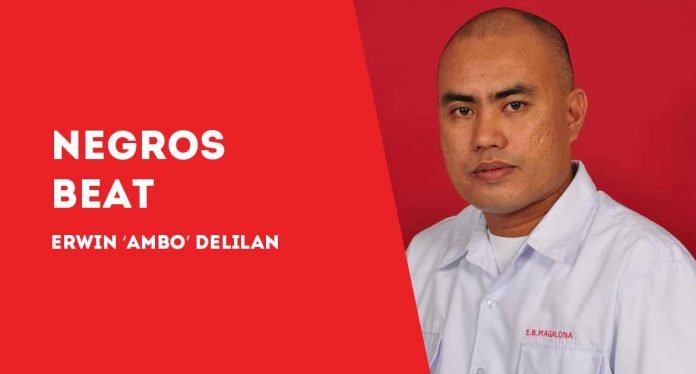
By ERWIN ‘AMBO’ DELILAN
SOME 3,200 farming families in one of the nine “poorest towns” in Negros Occidental is currently pinning hope in the P513,387,538.01 road bridge project mainly funded by the World Bank (WB).
This ambitious agriculture infrastructure project, coursed through the Department of Agriculture – Philippine Rural Development Project (DA-PRDP) via an 80-10-10 scheme, will set a new farming era in three rural communities of Hinoba-an town – barangays Talacagay, Bacuyangan and Damutan – allowing easy access to markets.
Eighty-percent of the total amount of the project, or P410, 710, 030.41 will be granted by WB through loan while the 20% will be equally divided by both DA and the local government of Negros Occidental, shelling out P51,338,753 each as an equity.
The project, the biggest, so far, for Negros Ocicdental, per the DA-PRDP history in the province, has broken ground on September 26. It will include a 24.475 -kilometer farm-to-market road and a 30 -linear meter bridge.
The project construction, with 10, 219.98 hectares of road influence area (RIA) on agriculture, is set to conclude within 660 days, or on June 30, 2026.
Stand to reap the benefits are the more 16,000 dependents of rice, corn, coffee, banana and coconut farmers in Hinoba-an, a first class municipality but the “poorest” in the southernmost portion of Negros Occidental.
7 YEARS IN THE MAKING
Albert Barrogo, assistant regional director of DA Region 6 , said the project means so much for the province. The proposal, including the engineering design, was seven years in the making. It also met with a lot of challenges that almost ruined it.
Per information, it was the late Negros Occidental governor Alfredo Marañon Jr. who initiated the project born out of an utmost concern for Hinoba-an farmers, who could not directly bring their farm produce to the market due to bad roads.
Hinoba-an’s Mayor Daph Anthony Reliquias said the road bridge project gives hope to their farming communities, which comprise two-thirds of the 414.59-square kilometer (km2) land area of the entire town.
Despite being a first class municipality, Hinoba-an’s poverty incidence was nailed at 32.34% based on the 2021 survey.
‘POOREST’ TOWN
In December 2023, the provincial government identified Hinoba-an as one among the nine “poorest” localities in the province, alongside Binalbagan, Calatrava, Candoni, Cauayan, EB Magalona, Hinigaran, Ilog, and Isabela.
The lack of steady means of livelihood among the locals is seen as a major factor behind the economic stagnation in this town after Philex Mining Corporation (PMC) in the neighboring Sipalay City totally halted its operations in 2019, affecting the Bacuyangan villagers in Hinoba-an, especially those from sitios Sangki, Spur 1, Spur 3, Spur 4, and Spur A-2.
Though the Manny Pangilinan-led PMC was based in Sipalay before, Reliquias said, the sources of gold were being dug in five sitios in Bacuyangan, Hinoba-an, also making a vibrant economy in their town.
On the other hand, PMC set a comeback last year both in Sipalay and Hinoba-an, but hindered by many environmental issues still.
‘GAME CHANGER’
Via www.worldbank.org., Ndiame’ Diop, WB’s country director for Brunei, Malaysia, Philippines and Thailand, said almost 60% of the poor work in agriculture in the Philippines.
“Accelerating the growth of agriculture and fishery is vital for the country’s overall and for poverty reduction,” Diop added.
Likewise, he said, improving access to markets will help farmers and fisherfolk in rural areas raise their incomes, provide for their families, and elevate their standards of living. Thus, Negros Occidental governor Eugenio Jose Lacson said the road bridge project will mean a brighter future, fostering development for Negrense farmers.
Colonel Rainerio De Chavez, director of the Negros Occidental Provincial Police Office (NOCPPO), said the project will be a “game changer” for an elusive “rebel-free Negros Island” quest.
Since Hinoba-an is bordering the twin provinces of Negros Occidental and Negros Oriental, he said the project will play a vital role in uplifting farmers’ lives, leading to a progressive and peaceful Negros Island.
Previously, Hinoba-an was among the “hotbeds of insurgency” in southern Negros Occidental. In 2022, however, the Philippine Army declared the town “insurgent-free”.
Reliquias said this WB-funded road bridge project is like a stone hitting two birds – to spur landmark agricultural developments and, at the same time, boost their town’s peace and order.
IRONY
In a nutshell, the soon-to-be constructed road for three Hinoba-an rural barangays is perceived to figuratively deliver gold for farmers.
But the gold mined from Bacuyangang sitios for quite a long time didn’t even produce a good road. Ironic therefore.
But then again, hearing from Mayor Reliquias, it seems that Philex is again itching to return to Sipalay and Hinoba-an to continue looking for gold.
Strong resistance from community of farmers, however, is building up for fear of more environmental damages to be incurred. Are they correct in their own logic?
Well, what is gold if their environment will be prostituted anew and, later on, they’ll be left hapless and penniless?
Road is sustainable while gold is valuable. But which do you think is best for Hinoba-an?
The road or the gold?/PN







